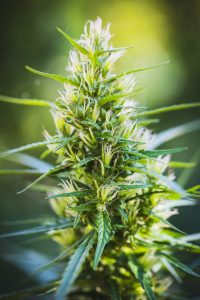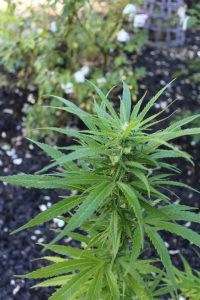Growers can force autoflowers to flower. But rarely will you need to do that because autos flower much faster than photoperiod strains. If they take too long, you can tweak grow essentials to induce flowering.
Auto flowers are easier to grow because you don’t need to fiddle with light schedules to induce flowering. They arose from regions with shorter seasons and adapted to flowering faster without stimulus from the environment.
Due to their short life cycle, you won’t find any need to force flowering autoflowers. For most growers, they are the go-to strains when you want a faster grow cycle.
But when they refuse to flower on their own, most growers won’t know what to do. How do you tickle their biological clock to tick faster?
Can You Force Autoflowers To Flower?
You can force autoflowers to flower when they have delayed flowering. Autoflowers should flower by the 5th week. If you wait till 8 weeks of growth, you can force them to flower by adjusting to the 12/12 light cycle.
Before you force the autos to flower, consider their health and eliminate any undue stress that might alter their growth. If the grow conditions are at optimum, give the plants more time, say three more weeks.
You don’t want to stress the plant for slight delays— that stress might turn the plants into hermaphrodites, and you lose the sinsemilla goodness.
After the 8th week, you’ll now be sure that something is wrong with your autoflowers. You can now tweak the grow room conditions to force them to flower.
Most people will tell you that tweaking light schedules will not induce flowering in autos. It isn’t entirely true. They are not as sensitive to light as their photoperiod counterparts, but they also react to the changes in the environment.
Growers love the autoflowers because they have a shorter life cycle. Autoflowers will start flowering barely five weeks of growth. If you’re growing in a high-risk area and value stealth, then autoflowers are the best choice for you.
Autoflowers are also great when you are managing a small space. You won’t need too much room as you would with giant photoperiod strains. Since their life cycle is short, most autoflowers don’t grow big.
Because they flower faster, you won’t need to force flower your autos if they’re in the best of health. The delay in flowering isn’t what most growers encounter and could be caused by genetic mutations or environmental stress.
How Do You Force Autoflower To Flower?
You can force stubborn autoflowers to flower by reducing their exposure to light. Changing the light cycle to 12/12 is enough to force the autos to flower.
Autoflowers are less troublesome when you keep everything in check. Feed them, water them, and keep the humidity and temperatures at the optimum, and you’ll rarely encounter delays in flowering them.
Sometimes you’re dealt a bad hand, and you grow autos with genetic mutations that won’t let them flower in time. But most times, it is the severity of the growth conditions that cause the delay. Here are factors that might delay flowering in autoflowers;

Extensive training– Autoflowers are less bushy and naturally exhibit thin foliage that grow lights easily penetrate. Thus, you can grow them without the need for training.
Invasive training techniques like super cropping cause more damage to autoflowers as they’ll need more time to heal before flowering.
Overwatering: When you overwater the plants, the water gets rid of the oxygen in the grow medium. Even if you manage to save the plant from the ravages of oxygen deprivation, it might not heal in time for timely flowering.
Male Plant; Could be waiting for flowers that aren’t coming? Sexing your autos is no different from the photoperiods. Your autoflowers can either be males or females.
Male flowers don’t produce flowers but instead, grow balls at the junction where the stems meet the stalk. This should be easy to spot, and you should remove them immediately to avoid fertilization.
To avoid the gamble with 50/50 male and female seeds, invest in feminized seeds that give you 100% female plants.
What Causes Autoflowers To Flower Early?
Autoflowers flower early because they are adapted to a shorter life cycle. All autoflowers trace their ancestry to ruderalis, a strain native to Eastern Europe and Central Asia, which have shorter growing seasons. The danger of impending cold forced the ruderalis to hasten its growth cycle before the arrival of frost.
The ruderalis grew in constant risk of dying before procreating. Thus, the autoflowers developed an internal mechanism to flower without external stimuli.
The ability to induce flowering from within itself is the major difference between an autoflower and a photoperiod strain.
Photoperiods adapted to the natural circadian cycle. So they bloom when the days are longer and flower when the days grow shorter. Outside, photoperiods begin flowering when summer transitions into autumn. This means photoperiods take longer as they rely on the changes in seasons.
Also, autoflowers do not grow as big as photoperiods. Thus, they don’t need a longer vegetative phase before they begin flowering.
Why Are My Autoflower Buds So Small?
Autoflowers generally yield less than their photoperiod counterparts. They grow fast and give a quick yield, but the buds don’t grow dense enough since they grow too fast. Autoflowers also feature a thin frame that doesn’t support dense buds.
However, ruderalis has been used widely in creating more productive cultivars. Autoflowering strains like the Northern lights compete favorably against photoperiod strains.
Still, if you think the buds are too small, then you might have failed to impress the ladies. Strains play a huge role in yield, but plant care matters most. Keep the grow room conditions to the optimum, you won’t have to worry about popcorn buds.

Lighting is essentially vital in the growth of cannabis. The intensity matters just as much as the length of exposure to light.
Inadequate lighting discourages bud formation and reduces resin production. These grow lights are great when you want the best from your autos.
In summary, autoflowers can naturally initiate flowering without the change in growth factors. But when it fails to flower through its natural mechanisms, you can force them to flower by changing light cycles to 12/12.
This is something you only have to do if they’re way behind schedule. Otherwise, you shouldn’t try to reduce the flowering time of autoflowers further. Five weeks isn’t that long.

